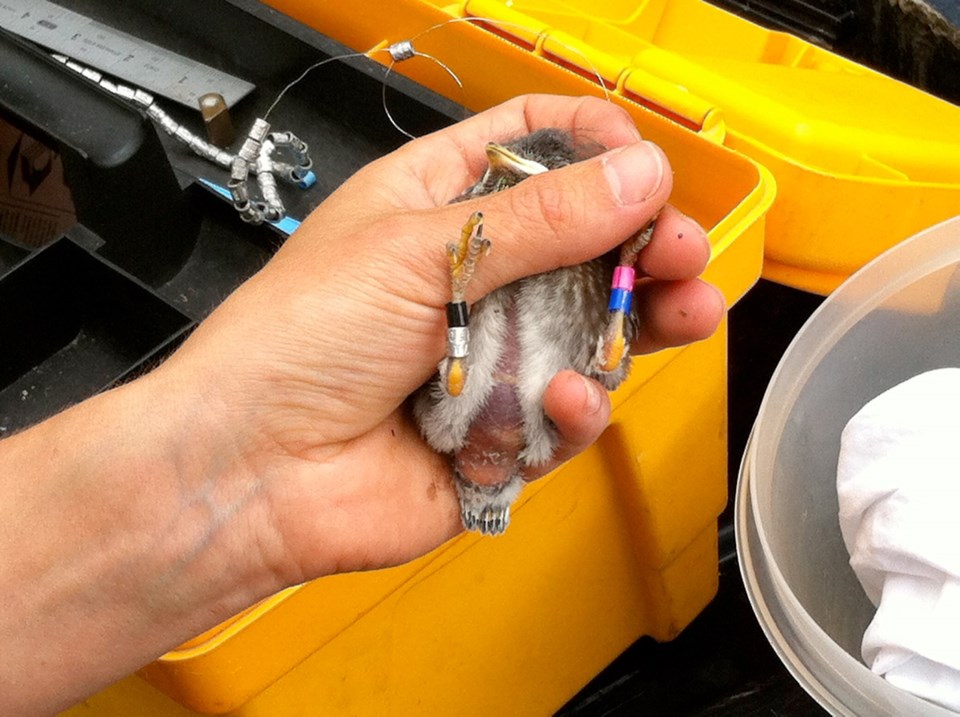Seven young Western bluebirds in the Cowichan Valley were unceremoniously tipped upside down and given multi-coloured bands on their legs this week as the next step in an effort to reintroduce the birds to Vancouver Island.
The nestlings, which were about 14 days old, will be tracked through the unique colour combination of each of their four leg bands.
The birds’ movements, survival and reproduction will be monitored and recorded, said Kathryn Martell, Garry Oak Ecosystems Recovery Team conservation specialist.
The team is in the second year of a five-year project to reintroduce Western bluebirds and, so far, their success has surpassed expectations.
Three of the birds brought to Vancouver Island from Washington state last year have returned to the Cowichan Garry Oak Preserve. Two were brought to Cowichan as nestlings with their parents and the third hatched in Cowichan.
This year, 10 pairs of birds, some with nestlings, are being reintroduced to the area.
“They’re all looking great,” Martell said.
Western bluebirds were common on Vancouver Island until the 1950s, but numbers started to decline as Garry oak habitat shrank and competition increased from invasive birds such as European starlings and house sparrows.
Until last year, the attractive blue and rust birds had not nested on Vancouver Island since 1995 and were considered locally extinct.
Now, with numbers slowly increasing, help is needed in tracking the birds, Martell said.
Any sightings should be reported to 250-383-3427 or bluebird@goert.ca.



